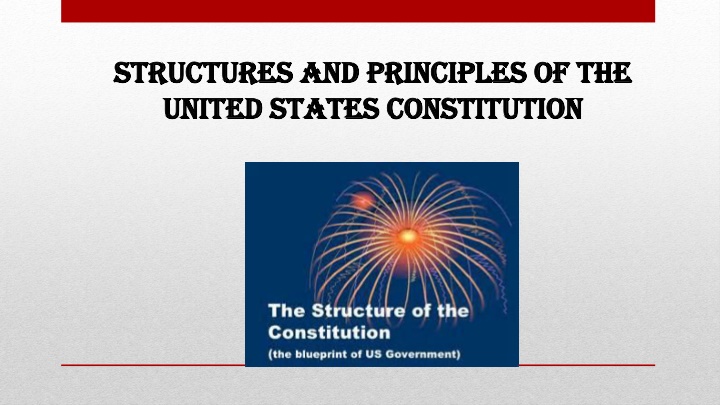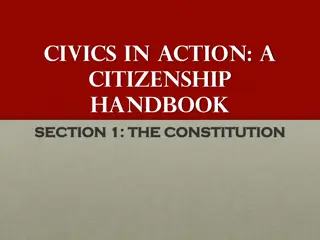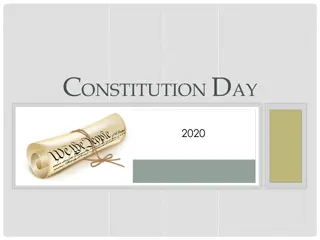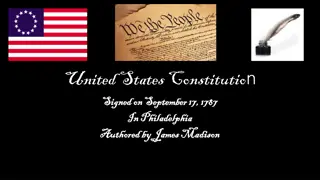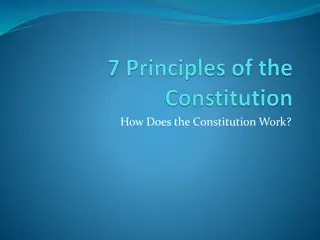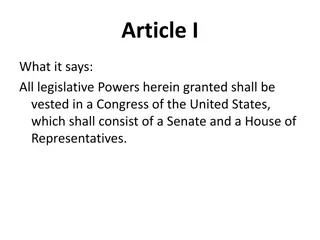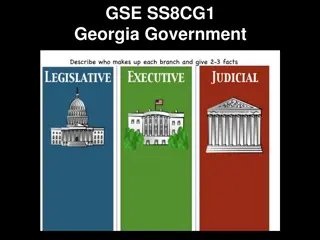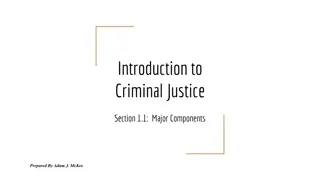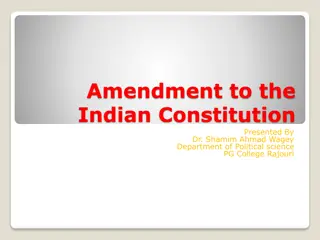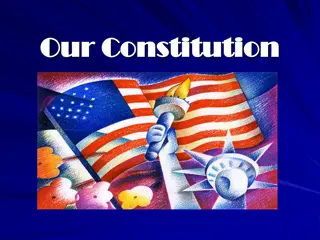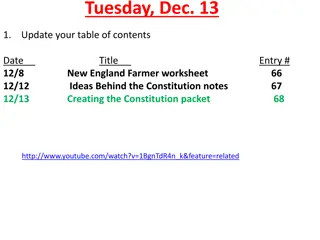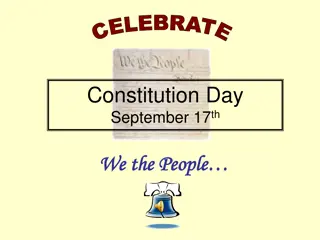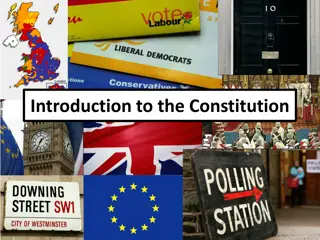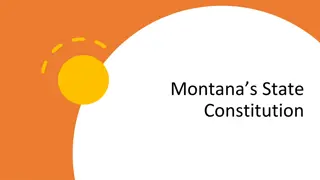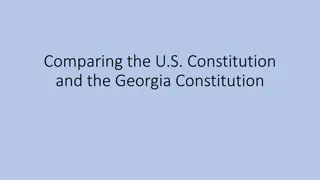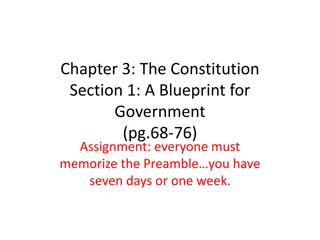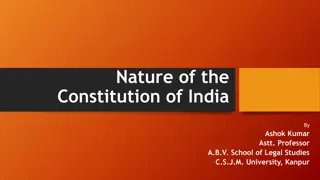United States Constitution Structures and Principles
Key principles, fears of the Constitution's authors, division of power among branches, importance of informed citizens in a republic, and details of the Constitution's parts like Preamble and Articles. Learn about the core components that shape the United States government.
Download Presentation

Please find below an Image/Link to download the presentation.
The content on the website is provided AS IS for your information and personal use only. It may not be sold, licensed, or shared on other websites without obtaining consent from the author.If you encounter any issues during the download, it is possible that the publisher has removed the file from their server.
You are allowed to download the files provided on this website for personal or commercial use, subject to the condition that they are used lawfully. All files are the property of their respective owners.
The content on the website is provided AS IS for your information and personal use only. It may not be sold, licensed, or shared on other websites without obtaining consent from the author.
E N D
Presentation Transcript
Structures and Structures and Principles of the Principles of the United States Constitution United States Constitution
1-What is a key principle of the United States Constitution? Dividing power among the three branches
2-What did the authors of the Constitution fear and why? Tyranny of government. If a government s powers were concentrated into a single executive branch, it would destroy individual freedom.
3-How did the authors deal with this fear? Divided the government into 3 separate branches: Legislative Executive Judicial
4-What is a republic? Voters have the authority through their elected representatives.
5-Why do you think a republican form of government depends on informed and active citizens? To make the right decisions about whom to elect, what the issues are and how their constitution is set up , how it works and its major principles.
6-The Constitution is divided into three parts Preamble Articles Amendments
7-What is the Preamble? Introduction, explains why the Constitution was written and the purposes of the United States government
8-Describe each of the seven articles of the United States Constitution: Article I- Legislative Branch Article II- Executive Branch Article III- Judicial Branch Article IV- Explains the relationship of the states to one another and to the national government. Article V- Ways the Constitution can be amended. Article VI- Supremacy Clause [Const. is supreme law of land] Article VII- Ratification and that the Const. would take effect after 9/13 states vote for it.
8-What are amendments and why what do they provide? Changes to the Constitution: 27 of them; allows the Constitution to be responsive to changes in the nation.
9-List and describe each of the Constitutions seven major principles a. Popular Sovereignty Rule by the people: authority for government comes from the people [People vote]
b. Federalism: power divided between the national and state governments. A middle way of sharing power: fear of too strong a central government National govt. acts for entire nation States have power over local matters
c. Separation of Powers Limits central government by dividing it into 3 branches; Prevents one branch from having too much power.
d. Checks and Balances Each branch overlooks the actions of the other two
e. Judicial Review Power of courts to declare acts of local, state and national governments invalid [unconstitutional] if they conflict with the principles of the Constitution. All federal courts have the power to declare law unconstitutional/Supreme Court has the final say. Not specifically mentioned in the Constitution. But Article III says that judicial power extends to all cases arising under the Constitution. Supreme Court decision can be changed in 2 ways: Court changes its view; Congress proposes an Amendment that is ratified by the states
f. Limited Government Constitution specifically lists the powers the government is allowed and powers that are prohibited to it. First 10 amendments set limits Protects nation from abuse of powers: Nixon resigns.
